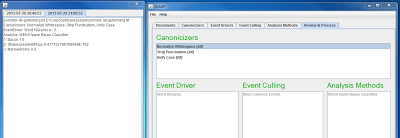Q by Bernard Lambeau.
From the webpage:
Q is a data language. For now, it is limited to a data definition language (DDL). Think “JSON/XML schema”, but the correct way. Q comes with a dedicated type system for defining data and a theory, called information contracts, for interoperability with programming and data exchange languages.
I am sure this will be useful but limited since it doesn’t extend to disclosing the semantics of data or the structures that contain data.
Unfortunate but it seems like the semantics of data are treated as: “…you know what the data means…,” which is rather far from the truth.
Sometimes some people may know what the data “means,” but that is hardly a sure thing.
My favorite example being the pyramids being build in front of hundreds of thousands of people over decades and because everyone “…knew how it was done…,” no one bothered to write it down.
Now H2 can consult with “ancient astronaut theorists” (I’m not lying, that is what they called their experts) about the building of the pyramids.
Do you want your data to be interpreted by the data equivalent of an “ancient astronaut theorist?” If not, you had better give some consideration to documenting the semantics of your data.
I first saw this in a tweet by Carl Anderson.
